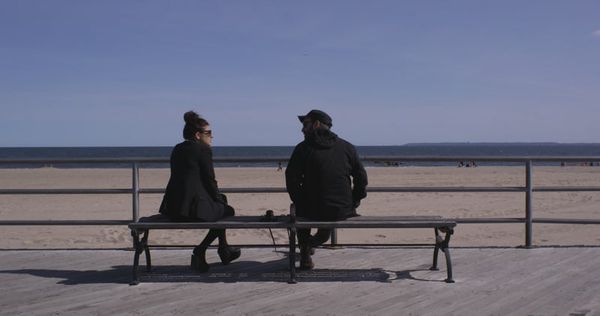Eye For Film >> Movies >> The Science Of Ghosts (2018) Film Review
The Science Of Ghosts
Reviewed by: Jennie Kermode

Marilyn Monroe. James Dean. Rudolph Valentino. In their time they were the biggest names in screen entertainment they were also human beings; but what are they now? What are we looking at when we watch them in films? Has the camera captured their ghosts? Did it make them into ghosts, condemning them to live forever in some half-remembered form?
To tell a story about someone is, inevitably, to summon ghosts, we are told at the start of this film. Made by Neil McCann, it's an experiment in storytelling focused on Irish musician Adrian Crowley, whom he met whilst making 2017's Lost In France. Crowley describes his own work as a form of storytelling: “I go to people and I tell them stories that are pieces of me.” There is perhaps not as much of his music here as fans might hope for but then one can listen to that any time. McCann is interested in the man behind it.
What emerges is a closely collaborative effort eschewing linear narrative in favour of an attempt to capture the soul of that man. “When I was ten I had a pet crow,” begins one anecdote, and an important part of it seems to be missing until one realises that the question it poses tells us more about what the experience meant to Crowley than the answer could. Clips of home movies explore his past, taking us to deeply personal places, providing glimpses of family life. This is no rock n' roll hagiography. The significance of moments onstage fades beside the day to day - Crowley is not, after all, defined by his presentation to the public.
As every creative artist knows, truth can reside as easily in fiction as in fact, and although Crowley's stories have the ring of truth, the format in which they are presented is deliberately staged, playful. An encounter with a photographer leads to a conversation about Aleister Crowley, whom the musician claims he is often mistaken for. These surreal vignettes have the effect of condensing the social negotiations of a lifetime into easilt digested form, all the while reminding us that everything we are seeing is illusory at some level.
We see Crowley in a hotel room in New York, in his home in Galway or wandering along the waterfront; we see him out in the Connemara countryside; all landscapes that have shaped him. Eventually, of course, we see him onstage, where the carefully selected emotion in his voice speaks to another kind of truth. Here are the ghosts that will haunt us.
Reviewed on: 28 Feb 2019














